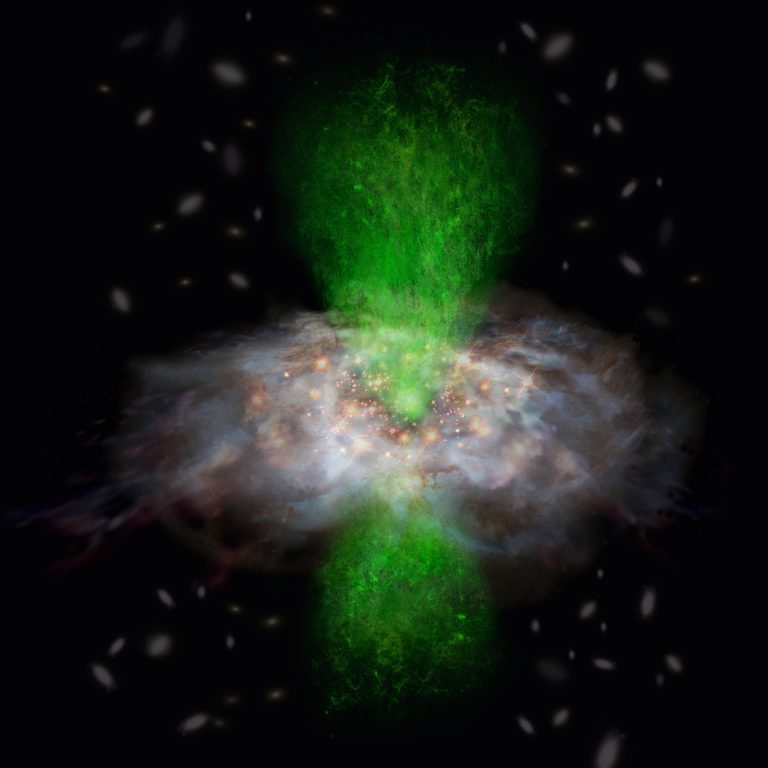Supermassive black hole and host galaxy not evolving together?
By Deborah Byrd in SPACE | February 25, 2018
Astronomers assumed supermassive black holes and their host galaxies evolve together and affect each other. They call it “co-evolution.” But it’s not happening in the distant galaxy WISE1029.

Artist’s concept of gas outflow (in green) driven by a central supermassive black hole not affecting the star
formation of its host galaxy. Maybe it happens when the gas is flowing especially perpendicularly to the
galaxy’s flat disk.
Image via ALMA (ESO/NAOJ/NRAO). Look below for real images of the galaxy in this study.
In recent decades, astronomers have learned that almost all massive galaxies have a supermassive black hole at their hearts. More recent findings show that the masses of these black holes match that of their host galaxies; that is, the more massive the galaxy, the more massive the black hole. And so it’s been natural for astronomers to assume that supermassive black holes and their host galaxies have evolved together and affect each other.
That’s why astronomers are so puzzled by new results from the ALMA telescope in Chile, suggesting no relationship between a distant galaxy and its supermassive black hole.
Yoshiki Toba of the Academia Sinica Institute of Astronomy and Astrophysics in Taiwan led this new research. The team used the ALMA radio telescope, because it’s sensitive to millimeter and submillimeter wavelengths and thus good at studying distant gas clouds – for example, those that form stars and possibly planets within our own local Milky Way galaxy. Galaxies evolve in large part by forming stars, and ALMA can also be aimed toward distant galaxies, to study star-forming gas in their disks. Plus, it can peer at the gas flowing outward from the vicinity of a distant galaxy’s central supermassive black hole.
Toba and his colleagues aimed the telescope toward an active galaxy known as WISE1029+0501. This galaxy is known to have a strong ionized gas outflow, presumably from the supermassive black hole at its center. The team also clearly detected carbon monoxide (CO) gas associated with that distant galaxy’s flat disk. Such gas is known to be related to star formation. Yet, these astronomers found, the CO gas in the flat part of the galaxy is not affected by the strong ionized gas outflow launched by the supermassive black hole from the galaxy’s center. Yoshiki commented in a February 20, 2018, statement from ALMA:
… it has made the co-evolution of galaxies and supermassive black holes more puzzling.
More:
http://earthsky.org/space/galaxy-wise1029-supermassive-black-hole-not-evolving-together
Science:
https://www.democraticunderground.com/122856209
